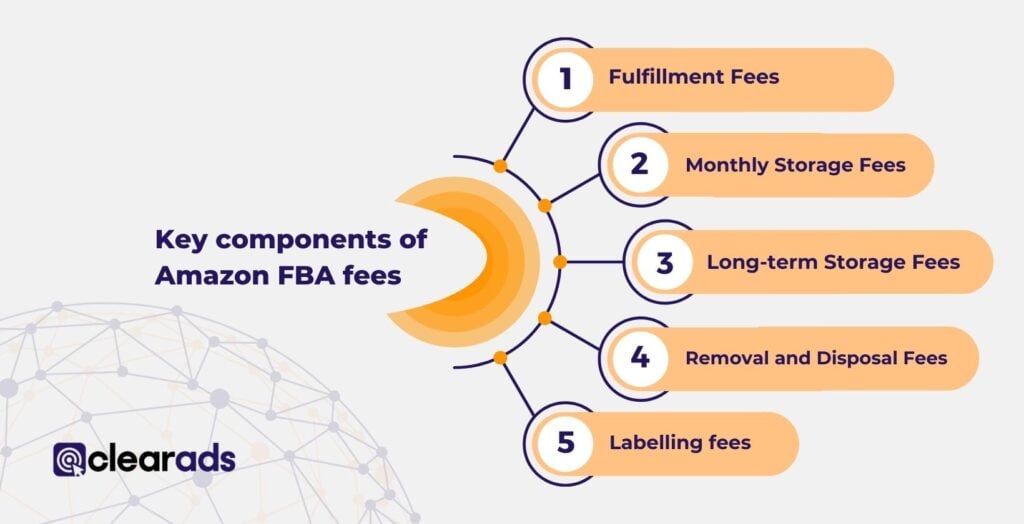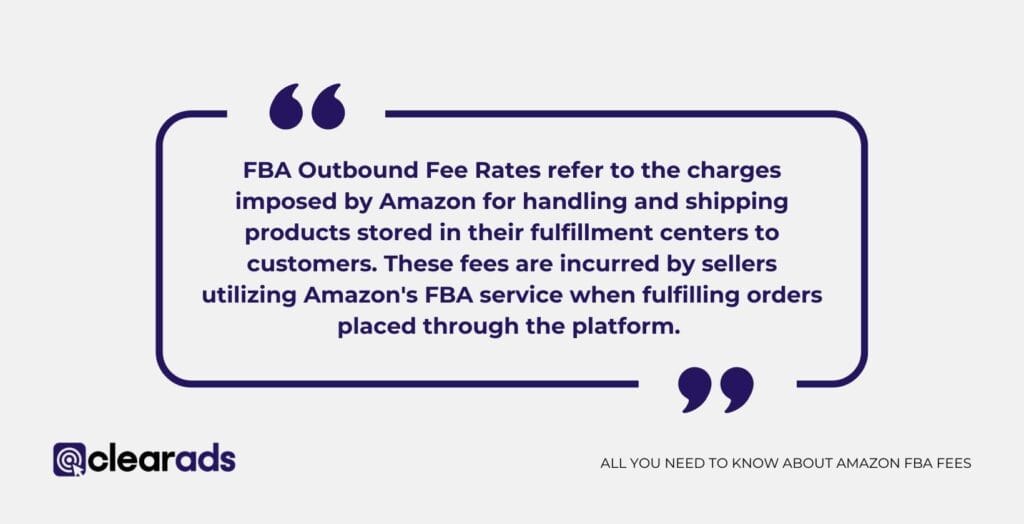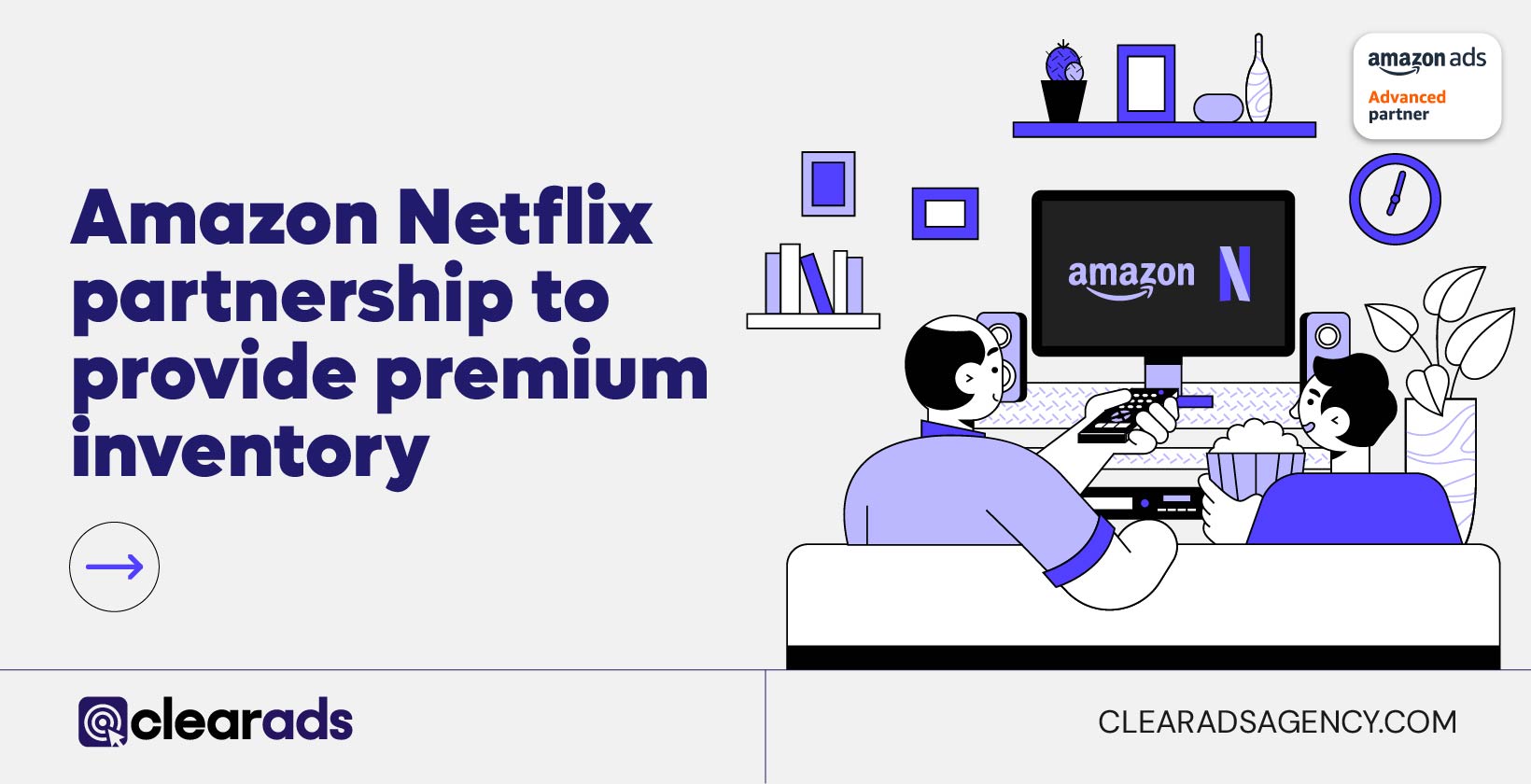Amazon’s Fulfillment by Amazon (FBA) fees are vital for sellers using its fulfillment services, impacting their financial planning and profitability. These fees include a range of costs like fulfillment fees charged per unit, Amazon FBA monthly storage fees with rates varying seasonally, long-term storage fees for items stored over specific periods, and additional fees for removal, disposal, and labeling. In 2023, these fees underwent significant revisions, aligning with the trend of rising fulfillment costs, which have increased on average by 30% since 2020. The FBA program’s fee structure is complex, encompassing regular seller fees, specific Amazon FBA seller fees, and additional service fees, all crucial for effective cost management. Managing and reducing these fees is key to enhancing profitability, achievable through inventory optimization and participation in Amazon’s discount and special programs. Sellers need to utilize Amazon’s tools and accurate calculations to fully grasp their fees and profit margins. Overall, the impact of FBA fees on Amazon businesses is substantial, affecting both profitability and operational decisions.
FBA fees, varying from fulfillment to storage and additional operational charges, play a critical role in shaping the financial landscape for sellers on Amazon. The recent adjustments in 2023 to these fees, part of a broader trend of increasing costs in the e-commerce fulfillment sector, underline the evolving nature of online retail logistics.
Understanding and effectively managing these FBA fees emerges as a crucial aspect for sellers aiming to maintain profitability in a competitive market. Amazon’s Fulfillment by Amazon (FBA) program is essential for sellers, offering streamlined services but also introducing complex fees. Navigating these costs is crucial for maintaining profitability and competitiveness in the ever-evolving online marketplace. Understanding and strategically managing these fees is key to long-term success on the platform.
What are Amazon FBA Fees
Amazon FBA fees are charges levied by Amazon for the use of its fulfillment (FBA) services. FBA fees encompass a range of costs associated with storage, fulfillment, and additional services provided by Amazon to sellers using its FBA platform. The fee structure is integral to Amazon’s FBA model, directly impacting the financial planning and profitability.

5 Key components of Amazon FBA fees include:
-
- Amazon FBA Fulfillment Fees: These are charged per unit and cover picking, packing, and shipping costs. The amount depends on the size and weight of the product.
-
- Monthly Storage Fees: Amazon charges these fees for storing items in its warehouses. The rates vary depending on the time of year, with higher fees typically during the peak season (October to December).
-
- Long-term Storage Fees: If items are stored over a certain period (e.g., six months), additional fees are applied.
-
- Removal and Disposal Fees: Sellers incur these fees if they choose to have Amazon return or dispose of their inventory.
-
- Labeling fees: Depending on the category, sellers need to have the FNSKU barcode on the product directly.
FBA fees only cover the first aspect of the aforementioned list: the fulfillment fees. These can differ based on package size, weight, and type.
Below is a table of Amazon FBA fees in the US for 2024:
| Standard-size product tiers | ||||
| Product Type | Size tier | Shipping weight | Non-peak period fulfillment fee(January 17, 2023 to October 14, 2023) | Peak period fulfillment fee(October 15, 2023 to January 14, 2024) |
| Most products (non-dangerous goods, non-apparel) | Small standard | 4 oz or less | $3.22 | $3.42 |
| 4+ to 8 oz | $3.40 | $3.60 | ||
| 8+ to 12 oz | $3.58 | $3.78 | ||
| 12+ to 16 oz | $3.77 | $3.97 | ||
| Large standard | 4 oz or less | $3.86 | $4.16 | |
| 4+ to 8 oz | $4.08 | $4.38 | ||
| 8+ to 12 oz | $4.24 | $4.54 | ||
| 12+ to 16 oz | $4.75 | $5.05 | ||
| 1+ to 1.5 lb | $5.40 | $5.70 | ||
| 1.5+ to 2 lb | $5.69 | $5.99 | ||
| 2+ to 2.5 lb | $6.10 | $6.60 | ||
| 2.5+ to 3 lb | $6.39 | $6.89 | ||
| 3+ lb to 20 lb | $7.17 + $0.16/half-lb above first 3 lb | $7.67 + $0.16/half-lb above first 3 lb | ||
| Apparel | Small standard | 4 oz or less | $3.43 | $3.63 |
| 4+ to 8 oz | $3.58 | $3.78 | ||
| 8+ to 12 oz | $3.87 | $4.07 | ||
| 12+ to 16 oz | $4.15 | $4.35 | ||
| Large standard | 4 oz or less | $4.43 | $4.73 | |
| 4+ to 8 oz | $4.63 | $4.93 | ||
| 8+ to 12 oz | $4.84 | $5.14 | ||
| 12+ to 16 oz | $5.32 | $5.62 | ||
| 1+ to 1.5 lb | $6.10 | $6.40 | ||
| 1.5+ to 2 lb | $6.37 | $6.67 | ||
| 2+ to 2.5 lb | $6.83 | $7.33 | ||
| 2.5+ to 3 lb | $7.05 | $7.55 | ||
| 3+ lb to 20 lb | $7.17 + $0.16/half-lb above first 3 lb | $7.67 + $0.16/half-lb above first 3 lb | ||
| Dangerous goods | Small standard | 4 oz or less | $4.19 | $4.39 |
| 4+ to 8 oz | $4.48 | $4.68 | ||
| 8+ to 12 oz | $4.64 | $4.84 | ||
| 12+ to 16 oz | $4.37 | $4.57 | ||
| Large standard | 4 oz or less | $4.64 | $4.94 | |
| 4+ to 8 oz | $4.89 | $5.19 | ||
| 8+ to 12 oz | $5.03 | $5.33 | ||
| 12+ to 16 oz | $5.34 | $5.64 | ||
| 1+ to 1.5 lb | $6.00 | $6.30 | ||
| 1.5+ to 2 lb | $6.29 | $6.59 | ||
| 2+ to 2.5 lb | $6.56 | $7.06 | ||
| 2.5+ to 3 lb | $6.85 | $7.35 | ||
| 3+ lb to 20 lb | $7.63 + $0.16/half-lb above first 3 lb | $8.13 + $0.16/half-lb above first 3 lb | ||
| Oversize product tiers | ||||
| Product Type | Size tier | Shipping weight | Non-peak period fulfillment fee(January 17, 2023 to October 14, 2023) | Peak period fulfillment fee(October 15, 2023 to January 14, 2024) |
| Non-dangerous goods (both apparel and non-apparel) | Small oversize | 70 lb or less | $9.73 + $0.42/lb above the first lb | $10.73 + $0.42/lb above the first lb |
| Medium oversize | 150 lb or less | $19.05 + $0.42/lb above the first lb | $21.55 + $0.42/lb above the first lb | |
| Large oversize | 150 lb or less | $89.98 + $0.83/lb above first 90 lb | $92.48 + $0.83/lb above the first 90 lb | |
| Special oversize | Over 150 lb | $158.49 + $0.83/lb above first 90 lb | $160.99 + $0.83/lb above the first 90 lb | |
| Dangerous goods (both apparel and non-apparel) | Small oversize | 70 lb or less | $10.48 + $0.42/lb above the first lb | $11.48 + $0.42/lb above the first lb |
| Medium oversize | 150 lb or less | $19.92 + $0.42/lb above the first lb | $22.42 + $0.42/lb above the first lb | |
| Large oversize | 150 lb or less | $101.91 + $0.83/lb above the first 90 lb | $104.41 + $0.83/lb above the first 90 lb | |
| Special oversize | Over 150 lb | $179.28 + $0.83/lb above first 90 lb | $181.78 + $0.83/lb above first 90 lb | |
Proper management of these fees can significantly influence the cost-effectiveness of using the FBA service. For example, efficient inventory turnover can reduce long-term storage fees, while selecting appropriately sized packaging can lower fulfillment fees. This impact makes knowledge of Amazon’s FBA fee structure crucial for sellers to optimize their pricing strategies and maintain profitability.
Understanding the FBA Fee Changes in 2023
In January 2023, Amazon introduced substantial increases in fulfillment fees, significantly affecting third-party sellers in the US. These fee changes led to higher costs in storage and shipping, as well as new additional fees. Due to the rise in Fulfillment by Amazon (FBA) fees, many third-party sellers opted for Fulfillment by Merchant (FBM) as an alternative to avoid the increased storage costs, facing the challenge of finding their own storage and fulfillment solutions. However, not all categories were impacted; for instance, fees for the special overweight products category remained unchanged.

Historical Perspective on Fee Increases
Amazon’s fulfillment costs have been on an upward trajectory each year. Slight increase over time can be overlooked, but since 2020 there has been a 30% increase for small and light inventory. In the Christmas period of 2022, US sellers paid $5.06 per item for a 1lb product, compared to $3.48 in 2021. This increase reflects the current global economic crisis to compete with rising prices and operational challenges.
Breakdown of New Fees of 2023
The new fees for 2023 affected outbound fee rates, peak monthly storage fees, storage utilization surcharges, and age inventory surcharges. The hike in Amazon’s Fulfillment by Amazon fees has led numerous third-party sellers to switch to Fulfillment by Merchant (FBM) to sidestep the rising storage expenses. However, this shift has compelled them to absorb alternative costs associated with establishing their storage and fulfillment systems.
Here are the new fees introduced in 2023:
-
- FBA Outbound Fee Rates
FBA Outbound Fee Rates refer to the charges imposed by Amazon for handling and shipping products stored in their fulfillment centers to customers. Outbound fees are calculated as a percentage of the product price. Sellers are charged for the services of storing, picking, packing, and shipping products to customers. The rates are determined based on various factors such as the size, weight, and destination of the item being shipped.
Amazon increased the FBA outbound fee rates by an average of $0.22 per order. The increase varies with the product’s weight, and Amazon has refined its weight categorization to 0.25lb and 0.5lb scales for more precise shipping cost calculation.
View the FBA Outbound fee rates in the US in the table above.
-
- Peak Monthly Storage Fees
Peak Monthly Storage Fees are additional charges levied by Amazon on sellers for storing inventory during high-demand periods, such as Christmas or Black Friday. Storage fees encourage efficient inventory management by motivating sellers to adjust stock levels to match demand and prevent excessive storage costs. This increase was introduced to combat the rise in sellers on Amazon using FBA during the COVID period since online shopping increased significantly.
Peak season storage fees (October to December) have risen by $0.20 per cubic foot for non-sortable items. Additionally, off-peak storage rates for standard and oversized products have increased by $0.04/ft³ and $0.03/ft³, respectively.
-
- Storage Utilization Surcharge
The Storage Utilization Surcharge is an additional fee for sellers who maintain inventory in their fulfillment centers that exceeds their allocated storage threshold. This storage fee is applied when the average monthly storage volume exceeds their assigned storage limits for standard-sized and oversized items. This affects sellers occupying greater fulfillment center space than their weekly sales demand justifies and is estimated to affect around 7.5% of sellers.
-
- Aged Inventory Surcharges
Amazon now charges for inventory stored between 180-270 days; with an increase in charges for aged products stored between 180-270 days. This is a significant increase of 167% for items aged over 300 days. These fees will be applied per item and will exclude: apparel, shoes, bags, jewelry, and watches.
Increasing these fees would force sellers to increase their prices to cover the costs of the selling fees. The purpose of these surcharges is to encourage sellers to manage their inventory more efficiently by incentivizing them to sell or remove stagnant stock.
Sellers are advised to create a removal order to avoid these charges.
Implementation of Low-Inventory-Level Fee for Standard-Sized Products
Starting April 1, 2024, Amazon will introduce a low-inventory-level fee for standard-sized products with inventory levels consistently below customer demand, as low inventory hampers product distribution efficiency and increases shipping costs. The low-inventory fee applies if both long-term (last 90 days) and short-term (last 30 days) historical days of supply fall below 28 days; it is calculated at the parent-product level and added to the FBA fulfillment fee for shipped units of eligible products. The fee rate varies based on product size tier and shipping weight, with small standard sizes based on unit weight and large standard sizes on the greater of unit or dimensional weight, detailed in the product size tiers section.
Comprehensive List of FBA Fees
The three ways to categorize FBA fees are platform fees, fees specific to FBA sellers, and additional service fees. Here is the comprehensive list of fulfillment fees and why they are implemented:
Platform Fees
-
- Referral Fees
Fees Specific to FBA Sellers
-
- Removal and Disposal Fees
-
- Fees for Apparel Sellers
-
- Small and Light Programme Fees
-
- FBA Fulfillment Fees
-
- Monthly Storage Fees
Additional Service Fees: are applicable for special services or seller conditions within the FBA framework.
-
- High-volume Listing Fees
-
- Rental Book Service Fees
Platform Fees
Referral fees:
Referral fees are charges levied by Amazon for each item sold through the platform. These fees are a percentage of the product’s selling price (excluding taxes and shipping) and vary across different categories. Amazon collects these fees as compensation for providing a platform for sellers to showcase and sell their products to a wide customer base.
For instance, in categories like electronics, this fee can be around 8%, while for clothing items, it could be as high as 15% depending on which marketplace a seller is selling in.
Fees Specific to FBA Sellers
FBA fulfillment fees:
FBA fulfillment fees are charged per unit and depend on the size and weight of the product. For example, a small, 1lb item might incur a lower fee compared to a bulky, 5lb item.
Storage fees Amazon FBA:
Monthly fees are based on the volume of space occupied by the seller’s inventory in Amazon’s warehouses. These fees vary seasonally, with higher rates typically observed from October to December.
Removal and Disposal Fees:
Removal and Disposal Fees are charges imposed by Amazon on sellers for taking back or disposing of inventory stored in Amazon’s warehouses. Removal Fees apply when sellers retrieve their stock, while Disposal Fees are incurred for disposing of unsellable items. These fees encourage efficient inventory management and help maintain warehouse space.
Fees for Apparel Sellers:
Variations in fees could stem from factors like item size, specialized packaging needs, and potential distinct handling requirements associated with apparel products. Apparel sellers face specific fees due to the different handling requirements. These include altered shipping weight calculations and, as of 2023, a decreased cost for processing returns,
Small and Light Program Fees:
Small and Light Program Fees are charges imposed by Amazon on sellers who enroll eligible small, light, and low-priced items in the program. These fees cover fulfillment and storage costs for qualifying products, offering reduced fees compared to standard fulfillment charges. This program is designed to incentivize sellers to offer compact and inexpensive items, enabling them to benefit from lower fulfillment costs and potentially increased competitiveness in pricing and sales.
Additional Service Fees
These fees are applicable for special services or seller conditions within the FBA framework.
High-volume listing fees:
High-volume listing fees are charged to sellers with an extensive number of active listings. This fee structure is intended to manage the extensive use of Amazon’s platform resources.
Rental book service fees:
Rental book service fees apply to sellers participating in Amazon’s book rental service. These fees are structured to accommodate the unique nature of book rentals, including handling and turnover rates.
Understanding this comprehensive list of FBA fees is essential for sellers to effectively calculate their costs, price their products competitively, and maintain profitability in the Amazon marketplace.
Strategies to Manage and Reduce FBA Fees
Sellers can reduce FBA fees through inventory optimization and by participating in Amazon’s discount and special programs. Effective management and reduction of Amazon FBA fees are crucial for enhancing profitability.

Optimizing Inventory for Better Fee Management
Inventory optimization is a key strategy for managing FBA fees. This involves:
● Balancing Inventory Levels: Maintaining optimal stock levels to avoid both overstocking (leading to higher storage fees) and stockouts (resulting in lost sales).
● Regular Review of Inventory Performance: Monitoring inventory turnover rates to identify slow-moving items that could incur long-term storage fees.
● Strategic Removals: Timely removal of aged or unsold inventory to evade aged inventory surcharges.
Taking Advantage of Fee Discounts and Special Programs
Amazon offers various programs that provide fee discounts or special terms, helping sellers reduce their FBA costs.
Small and Light Program Expansion
The Small and Light Program, designed for items priced under a specific threshold and below certain weight and size limits, offers reduced fulfillment fees. Expansion of this program includes broader eligibility criteria, making it accessible to more products and thereby enabling sellers to save on fulfillment costs for eligible items.
US FBA New Selection Program
The US FBA New Selection Program is a service offered by Amazon that assists sellers in launching and introducing new products into the marketplace. This program provides support in the form of reduced fees and promotional benefits for eligible new products, aiming to encourage sellers to introduce fresh inventory and expand their offerings on the platform.
The US FBA New Selection Program provides benefits for new product listings, such as:
-
- Fee Waivers: Offers free storage, removals, and returns processing for eligible new products.
-
- Increased Rebates: Enhanced rebate from 5% to 10% on ASIN sales price.
-
- Extended Eligibility Period: The eligibility period for these benefits has been extended, allowing sellers more time to establish their new products in the marketplace.
By leveraging these strategies and programs, Amazon FBA sellers can effectively manage and reduce their operational costs, optimizing their overall business performance on the platform.
Tools and Calculations for FBA Fees
Utilizing tools and accurate calculations is essential for Amazon FBA sellers to understand their fees and profit margins. Amazon provides specific calculators and resources for this purpose.
Using Amazon’s Fee Calculators and Other Resources
Amazon’s Fee Calculators are instrumental for sellers to estimate their FBA fees accurately. Key resources include:
-
- FBA Revenue Calculator: This enables sellers to input specific product information, such as dimensions and weight, to receive an estimate of applicable FBA fees.
-
- Fulfillment by Amazon Revenue Calculator: Offers a detailed breakdown of fees for individual products, helping sellers compare FBA with other fulfillment options
Additionally, third-party tools and software such as Sellerboard and Sellerlegend can provide more nuanced insights into fee structures and profitability, especially for larger inventories or specialized product categories.
How to Calculate Your Profit Margins After Fees
To calculate profit margins after FBA fees, sellers need to follow a structured approach:
-
- Determine Total FBA Fees: Sum up all applicable fees, including fulfillment, storage, and any additional charges.
-
- Subtract FBA Fees from Selling Price: Deduct the total FBA fees from the product’s selling price to calculate gross profit.
-
- Factor in Additional Costs: Include other costs such as procurement, shipping to Amazon’s warehouse, and marketing expenses.
-
- Calculate Net Profit: Subtract these additional costs from the gross profit to determine the net profit margin.
Here’s an example:
Product Selling Price: $100
CM1 (Buying Costs): $30
CM2 (FBA + Referral Fee): $27
CM3 (Marketing Costs): $25
Net Profit = $100 – $30 – $27 – $25 = $18 per unit
This calculation identifies the net profit margin per unit after accounting for all costs.
The Business Impact of FBA Fees
The business impact of Amazon FBA fees is significant, influencing both profitability and operational decisions for sellers on the platform.
Is Amazon FBA Still Profitable in 2023?
In 2023, Amazon FBA remains a profitable venture for many sellers, despite the fee increases. Profitability hinges on factors such as product selection, pricing strategy, inventory management, and the efficient use of Amazon’s fulfillment services. While the increased fees present challenges, strategic planning, and optimization can offset these costs and maintain profitability.
For example, a seller specializing in lightweight, high-demand products may find greater profit margins due to lower fulfillment fees, even after accounting for the fee hikes. Conversely, sellers with bulky or slow-moving items might need to reevaluate their inventory to sustain profitability.
Balancing Costs and Benefits as an Amazon Seller
Balancing the costs and benefits of using Amazon FBA involves a comprehensive analysis of both the direct and indirect impacts of FBA fees on business operations. This includes:
-
- Assessing Fee Impact on Profit Margins: Regularly analyzing how changes in FBA fees affect overall profit margins.
-
- Inventory Management: Optimizing inventory to reduce storage and long-term holding fees.
-
- Leveraging Amazon’s Programs: Utilizing programs like the Small and Light Program or the FBA New Selection Program to reduce certain fees.
-
- Market Positioning: Adjusting pricing strategies and product selection to stay competitive while covering increased costs.
In summary, while FBA fees significantly impact business operations on Amazon, careful planning and strategic decisions can help sellers balance these costs and continue to profit in the dynamic e-commerce environment of 2023.
Conclusion
In conclusion, effectively navigating Amazon’s FBA fee landscape is crucial for sellers aiming to maintain profitability and success. This article has shed light on the complexities of FBA fees, underscoring the need for thorough understanding, strategic management, and adaptation to the evolving fee structures. By embracing the insights provided, sellers can effectively manage their expenses, optimize their operations, and remain competitive in the dynamic e-commerce environment. The mastery of FBA fee management, therefore, emerges as a fundamental element in the broader strategy of successful selling on Amazon, directly influencing financial success and market standin


